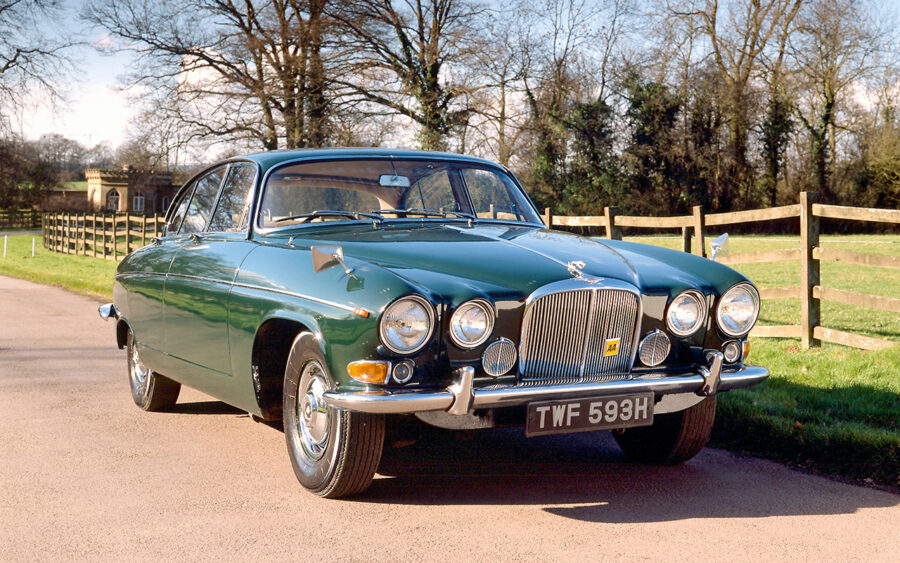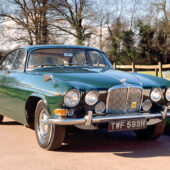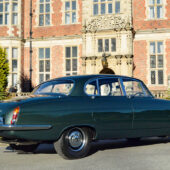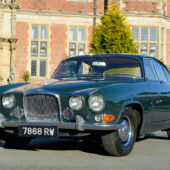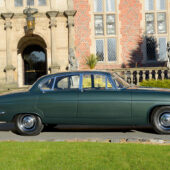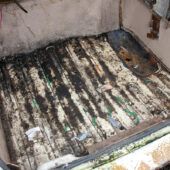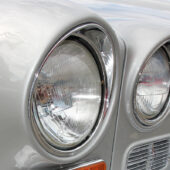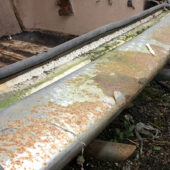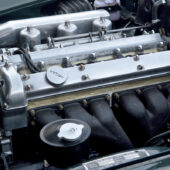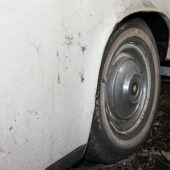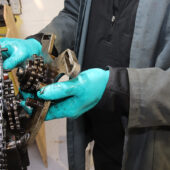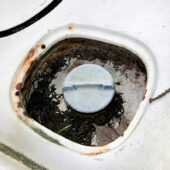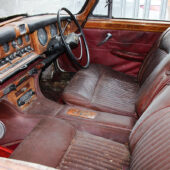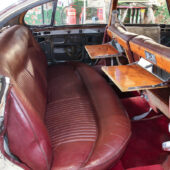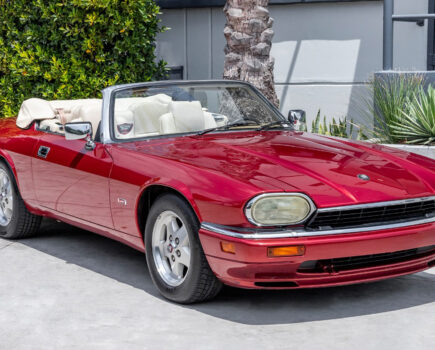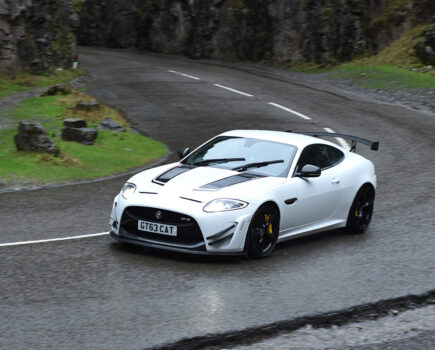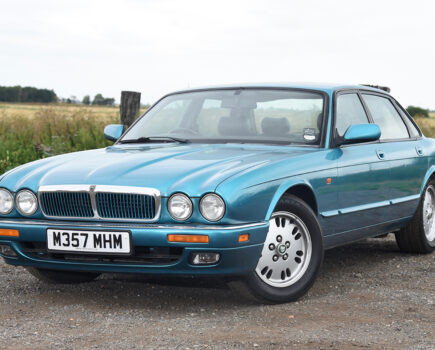Jaguar’s largest saloon of the 60s offers tempting value – but what do you need to know before taking the plunge? Here’s how to buy the Jaguar MkX or 420G
Words: Rob Hawkins
Jaguar’s replacement for the MkIX saloon marked a major step forward in specification; the new Jaguar MkX did away with its predecessor’s separate chassis and featured low-slung, ultra-modern styling. It showed that Jaguar was moving with the times: the MkX was a full-size model aimed at the crucial American market, capable of competing with large saloons from US manufacturers.
With an all-steel monocoque body manufactured by Pressed Steel Fisher, Jaguar’s MkX flagship was launched in October 1961. Measuring almost 17 feet (5.13 metres) in length and 6ft 4in (almost two metres) in width, the Jaguar MkX was the largest saloon offered by the brand at the time, and for many years held the record for being Britain’s widest car.
Under the skin of the MkX, the specification was modern and impressive by standards of the early 60s. The suspension was independent, sharing similar components at the rear to the new E-type (Jaguar’s other debutant of 1961) and featuring wishbones, coilovers and an anti-roll bar at the front. The brakes featured servo-assisted discs and Dunlop calipers all round, while steering was power-assisted.
Under the bonnet, the E-type’s 3.8-litre XK engine was used initially, fed by three SU carburettors to produce an impressive 265bhp at 4,000rpm together with 260lb ft of torque. There was a choice of a three-speed Borg-Warner automatic gearbox or a Moss four-speed manual. A test report in The Autocar magazine in November 1962 recorded a top speed of 119.5mph (almost matching Jaguar’s claimed figure of 120mph), with a 0-60mph time of 10.8 secs and average fuel consumption of 14.1mpg.
The MkX’s XK engine was stretched to 4.2 litres in 1964, retaining the same power output but with torque increased to 283lb ft at 4,000rpm. A test of this latest version appeared in The Autocar in October 1964, recording a top speed of 121mph, a 0-60mph time of 9.9 secs and average fuel consumption of 14.5mpg.
In 1965 manual overdrive was added to the automatic gearbox, while air-conditioning became an optional extra the following year. In October 1966, the MkX was rebranded as the 420G and facelifted with a new radiator grille, redesigned wheel trims and a padded dash rail, although mechanically it remained unaltered. The 420G ceased production in 1970, two years after the Jaguar XJ6 had been launched.
Annual production of the XJ6 was at times more than the total production of the MkX and 420G combined, which came in at a mere 25,211 cars – comprising 12,977 MkX 3.8s, 5680 MkX 4.2s and 6554 420Gs. Throughout their lifetime, however, the MkX and 420G gained respect as high performance, executive saloons that offered an impressive level of luxury – electric windows, modern brakes, power-assisted steering and air-con from 1966. And in terms of comfort, they even managed to rival Rolls-Royce thanks to their sofa-sized seating for five, plus an enormous boot and twin ten-gallon petrol tanks mounted inside the rear wings to provide a range of almost 300 miles.
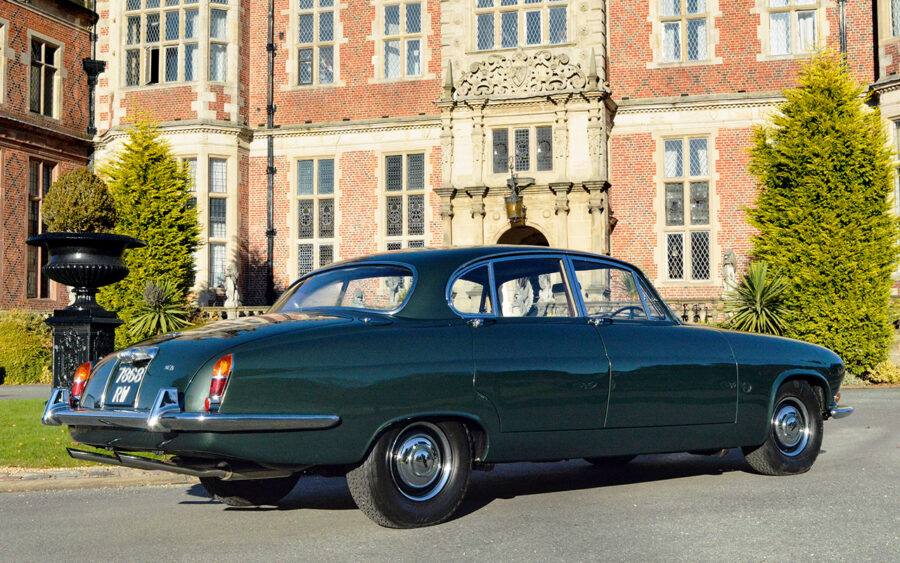
Bodywork
When considering a MkX or 420G now, then the state of its bodywork is your most important consideration. Corrosion and a lack of availability of replacement panels and repair sections bring particular challenges. If you’re buying a car that’s rotten, you should be prepared for specialist fabrication to repair it, with some components requiring complex engineering – such as the large and heavy front doors, which use helical torsion springs mounted inside the A-pillars to enable them to be opened from inside with ease.
Perhaps the best approach to assessing the bodywork on a MkX or 420G is to start at one point and work your way around. Open the boot, empty everything that’s inside and look for signs of rot, particularly in the spare wheel well and around the boot floor. Make sure you also feel underneath the boot floor for evidence of corrosion, weakened metal and poor quality previous repairs. The twin petrol tanks are mounted in the corners of the boot, so remove any trim panels and look down the sides of them for trapped water and rust. The drain tubes from the fuel filler caps above should be routed through the rear wheelarches; if they are missing, water will run inside the wheel arches and probably collect around each petrol tank.
Moving forwards along the bodywork, inspect the rear wings – especially the bottom corners and wheel arch lips – for corrosion. If there’s a problem here, the good news is that rear wheelarch repair panels are available.
Open the rear doors and check along the sills and the bottom of the doors. Water that runs down the door glass should drain out of the doors, but blocked drain holes will cause it to collect inside and eventually result in corrosion. If the insides of the sills are upholstered, and this cannot be removed, tap along them with your hand to feel for crunchy metalwork. Use the rubber handle of a hammer to gently tap along the underside of the sill and listen for similar crunching sounds.
Perform a similar number of checks on the front doors, but also check that they are easy to open when you’re sat inside the car. As mentioned earlier, there are some complex springs inside the A-pillars, which means these doors should feel very light when opening them.
Continue checking all the way along the sills and up to the front wheelarches, where the front wings should be closely inspected. Replacement wings don’t appear to be available, so any corrosion will mean the wing has to be repaired as best as possible. A similar problem appears to exist with the doors, meaning that secondhand parts are worth collecting if you should spot any for sale. Glass and some trim items are also scarce, although specialists including – SNG Barratt – often have an assortment of exterior and interior trim in stock.
While problems relating to the bodywork seem to almost write off the prospect of buying a MkX or 420G if it’s particularly rotten, the majority of other components are more readily available. As long as the car’s bodywork can either be revived or preserved, then all is not lost.
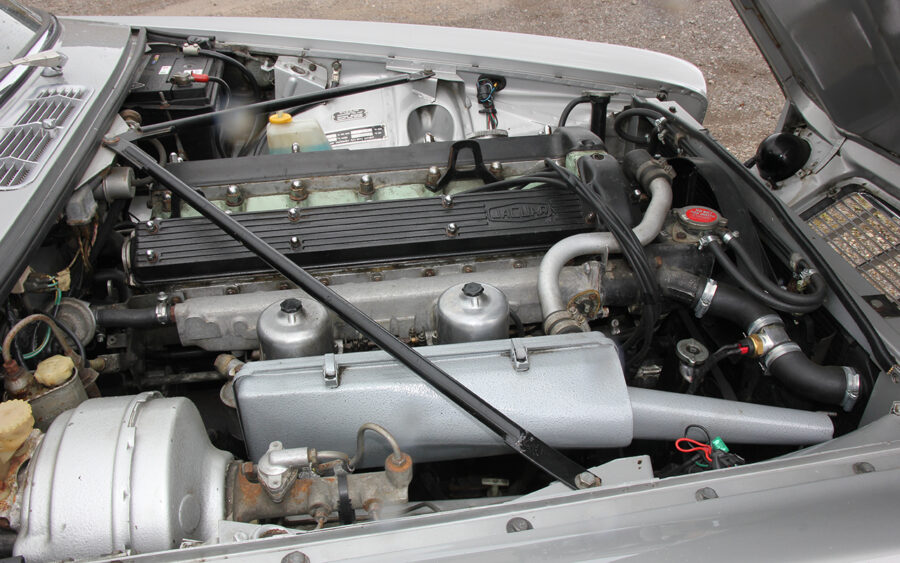
Engine and transmission
With the MkX and 420G using only XK powerplants (in 3.8- or 4.2-litre guise), it’s an engine that’s well supported by a wide array of independent Jaguar specialists. And as a unit that was, of course, fitted to the majority of classic Jaguars built before, during and after the production life of the saloons featured here, it’s obviously familiar to most Jaguar enthusiasts.
Oil leaks are commonly caused via the crankshaft’s rear oil seal, which can be uprated with a later seal, although this is a major job requiring removal of the engine and a partial strip-down. The timing chain can become noisy, often indicating a problem with one of the tensioners; this can be repaired in situ, but it’s still time-consuming and potentially expensive.
Use of a good-quality coolant that contains suitable additives to avoid internal corrosion of the engine (combined with regular coolant changes) is essential. If not, corrosion, overheating and head gasket failure are some of the problems to expect, few of them straightforward to fix. Removing the cylinder head from an XK engine that could be at least fifty years old usually requires the use of an engine crane to suspend it and help break it free.
When inspecting any MkX or 420G, start up the engine and don’t be surprised by a few noisy tappets until the oil has circulated. Check the oil pressure reading on the dashboard gauge, which should be around 40psi when warm at around 3,000rpm. If the engine needs a rebuild, then it could cost as much as the overall car is worth. An exchange engine can be around the £10,000 mark or more.
Pre-1964 MkXs with a manual gearbox don’t have synchromesh in all gears, whereas they should have after that year. From 1966 onwards, automatic gearboxes should have a manual overdrive.
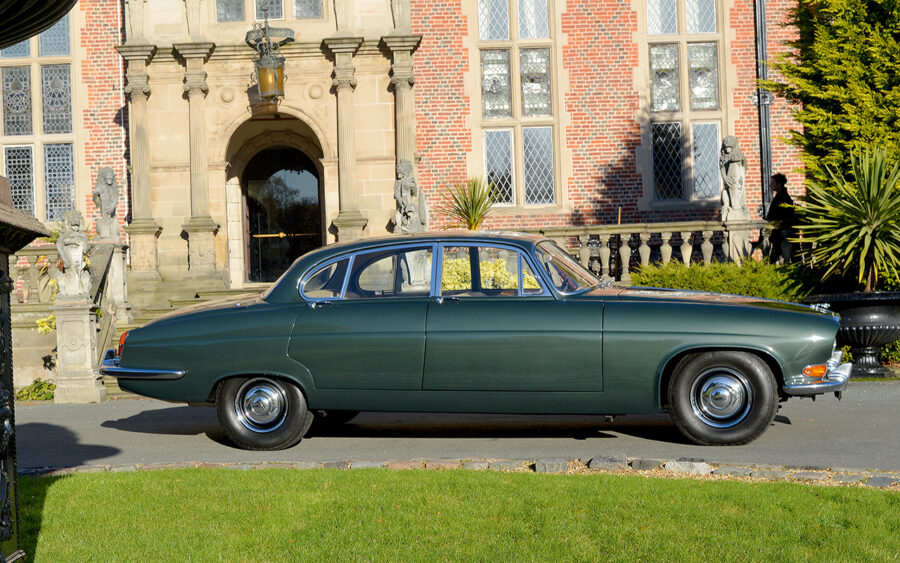
Steering, suspension and brakes
You should visually inspect the suspension coil springs for corrosion and fractures, as well as checking the shock absorbers for leaks. If possible, raise and secure one corner of the car at a time (use a substantial axle stand) to waggle the road wheel and feel for play in the steering, wheel bearings and suspension bushes. Suspension components seem to be readily available at present.
The front brakes can be inspected by turning the steering to full lock, but the rears are inboard, so there’s very little to see unless you have access to a ramp or inspection pit. Brake calipers don’t seem to be available new these days, but upgrades to four-pots can be ordered.
Check that the handbrake works, especially on a Jaguar MkX or 420G with an automatic gearbox, which means it probably isn’t used as frequently. Removal of the rear subframe assembly is usually the best approach to fixing problems with the handbrake and the rear brakes, allowing them and the suspension to be overhauled, although it’s a major job.
It also pays to check the size of the wheels, which should be 14 inches in diameter and fitted with 205mm-wide tyres; it’s not unusual, however, to find that later, larger wheels have been fitted.
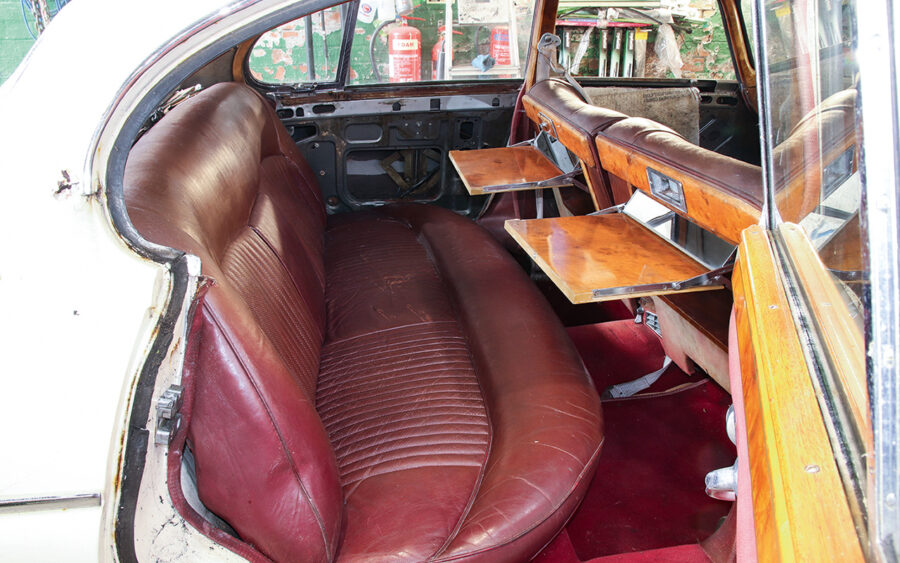
Interior and trim
The Jaguar MkX and 420G both feature a luxurious interior, which boasts more wood than a DIY superstore and more leather than a dairy farmer’s finest herd. Later models were also equipped with an early form of air-conditioning. You can expect a high standard of trim and equipment in all cases, with a dashboard full of gauges and switches, picnic tables for rear seat passengers and electric windows all round.
Jaguar parts specialists such as SNG Barratt can source some items of trim, and upholstery can often be colour-matched and replaced by a dedicated trim specialist. As with any classic Jaguar, however, major renovation of an interior is likely to prove very expensive, and will need to be taken into account when you’re haggling over a project car’s asking price.
Jaguar MkX: our verdict
The Jaguar MkX and subsequent 420G were arguably too big to be a top-selling luxury contender in the UK market, which explains why the latter’s popularity diminished in the light of the more appropriately proportioned XJ that first appeared in 1968. Maybe the MkX and 420G were more suited to the American market, although over there they were faced with even larger rivals with the added allure of V8 power.
Nowadays, however, these underdogs of the Jaguar range of the 1960s now have a certain rarity appeal, making them an interesting choice for anyone seeking something a bit different that manages to offer better value than its Jaguar contemporaries. Parts may be harder to find or fabricate, but it’s not impossible to run or restore a MkX or 420G if your budget is relatively tight. Just make sure that you research the cost and availability of any parts you’re likely to need before you take the plunge.

